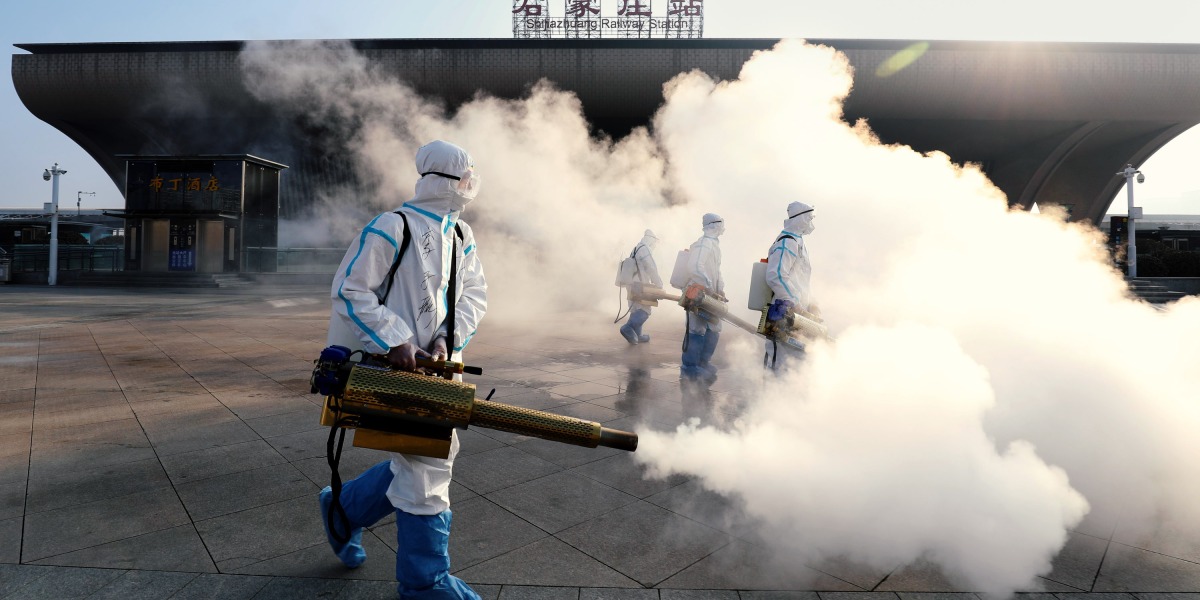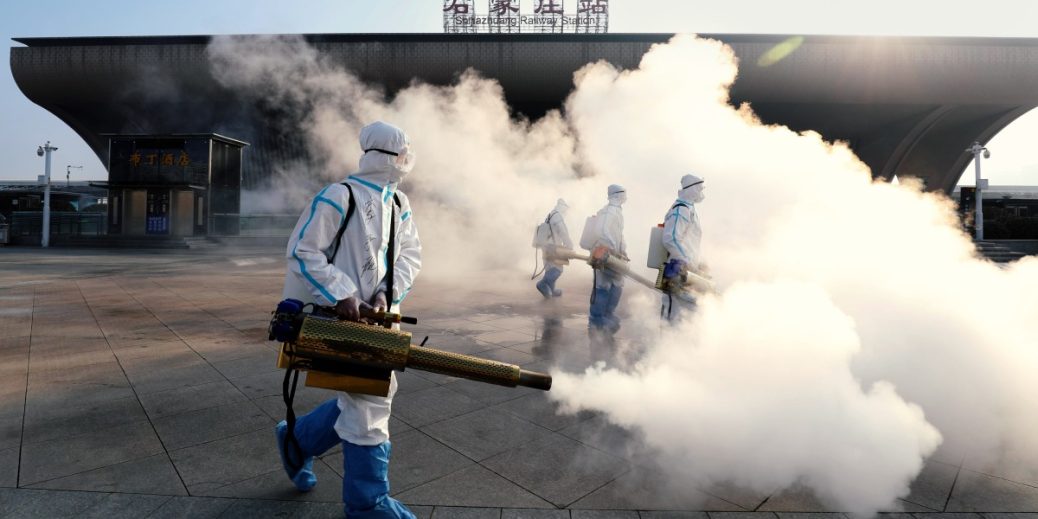
As China grapples with its biggest-ever spike of covid cases, the government’s decision to keep pushing the narrative that surfaces pose a significant infection risk means time and money are being poured into the wrong things during a crisis, scientists say. Measures to stop airborne transmission are far more effective.
The policy of prioritizing disinfection is part of a wider state-controlled narrative that’s politicizing the health crisis and is designed to legitimize the government’s response. It also plays into China’s favored narrative about covid’s origins: that it could have been imported into Wuhan through frozen food.
Diverging pandemic paths
The scientific debate about how much surfaces contribute to covid’s spread is pretty much over internationally. For example, a study from the University of Michigan, published in April 2022 in the Journal of Exposure Science & Environmental Epidemiology, estimated that the chance of catching covid from a contaminated surface is 1 in 100,000—well below the benchmark researchers suggested as a tolerable risk.
And while the risk isn’t zero, the vast majority of public health bodies, including the World Health Organization, have judged that it’s too low to warrant active measures except recommending hand-washing. Outside China, most countries long ago gave up encouraging people to disinfect things as a way to avoid covid. The US Centers for Disease Control and Prevention updated its guidance a full two years ago, in May 2020, to reflect the fact that it’s mostly unnecessary.
Instead, the overwhelming consensus is that aerosols and droplets transmit the virus much more readily than surfaces. Indeed, the same April 2022 Michigan study found that airborne transmission is 1,000 times more likely than surface transmission.
“People only have the bandwidth to do so many protective health behaviors. It’s ideal for them to be focusing on the things that are going to have the biggest impact on reducing their risks,” says Amy Pickering, an assistant professor of environmental engineering at the University of California, Berkeley. “And that would be mask-wearing, social distancing, avoiding crowded indoor spaces.”
The media and government in China often point to research to justify the continued fear of surface transmission. Studies carried out by researchers in Hong Kong, Japan, and Australia have found that covid viruses can survive days or weeks on various surfaces.
But many have not been peer-reviewed, and anyway, these lab results don’t reflect real life, says Ana K. Pitol, a postdoctoral researcher at the Liverpool School of Tropical Medicine in the UK. “If you put a huge droplet inside a medium that protects the virus, and you put it inside a container, and you put it in an incubator, of course, it will survive many days, sometimes even weeks,” she says. “But the question we should be asking is how long it survives in a realistic situation.”




Recent Comments